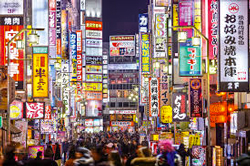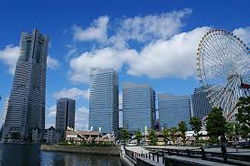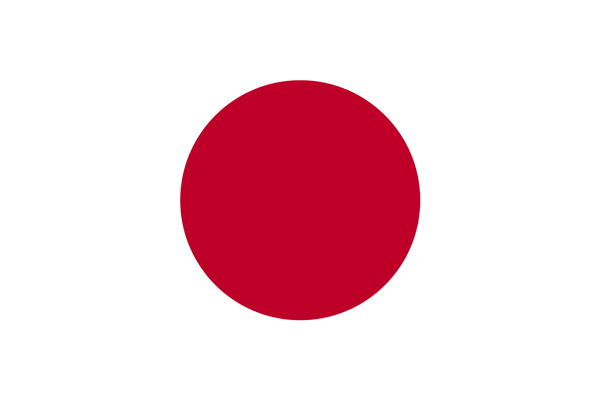Click the points on the map to learn more.

 |
TokyoTokyo is not only Japan’s capital, but the most populous metropolitan area in the world. Tokyo is a bustling cosmopolitan city, as well as a center for transportation, culture, finance, government, and economics. Tokyo features the world's second largest stock exchange and is the world's most expensive city to live in. Tokyo has grown organically rather than according to a plan, meaning the city is laid out much differently than grid-like patterns of cities such as many in the United States. The city boasts several concentrated “centers” rather than a single downtown. Tokyo is unique in that it is strikingly mono-racial, has incredibly low crimes rates, and is a global financial center rivaling the United States and Europe. |
| Back to Map | |
 |
OsakaOsaka is one of Japan’s largest cities, and a principle industrial and commercial center of Japan. Its main industries include machinery, iron and steel, metals, textiles, chemicals, food processing, and printing. The city is also a major port and transportation hub. Osaka is also known for its Osaka and Kansai universities. It's also famous for its many theater, including puppet theaters! |
| Back to Map | |
 |
KyotoKyoto is one of Japan’s largest cities, and was once its capital (794-1192). It is an important cultural and spiritual center of Japan and is considered the nation's culutral center. Kyoto is home to over 1,600 Buddhist temples and 400 Shinto (a Japanese religion) shrines. Kyoto is the site of the old imperial palace, the former ruling palace of the emperor of Japan. It was originally built in the 12th century and is now one of Japan's most treasured landmarks. |
| Back to Map | |
 |
Mt. FujiMount Fuji, the tallest mountain in Japan, stands 12,388 feet tall. The nearly perfectly symmetrical volcano is worshiped as one of Japan’s “Three Holy Mountains”, and is an active volcano, which last erupted in 1708. Mount Fuji is a UNESCO World Heritage Site, which includes 24 other locations near the mountain (including several shrines, lodging houses, lakes, hot springs, falls, and a pine tree grove). Several hundred thousand people climb Mount Fuji every year, mainly in July and August. |
| Back to Map | |
 |
HiroshimaHiroshima means “broad island” in Japanese, and is the capital of the Hiroshima Prefecture on Japan’s largest island. Hiroshima gained city status in 1889. Hiroshima is best known as the first city in history to be targeted by a nuclear weapon, when the United States Air Forcesdropped an atomic bomb on the city on August 6, 1945. Some of Japan’s armies were headquartered in Hiroshima and the city had large depots of military supplies. The nuclear weapon directly killed an estimated 70,000 people. By the end of 1945, injury and radiation brought the total killed to 90,000-166,000. About 70% of the city’s buildings were destroyed. Hiroshima was rebuilt after the war, and now the city features the Hiroshima Peace Memorial Park and Memorial Museum. |
| Back to Map | |
 |
YokohamaYokohama is Japan’s second largest city and one of its leading seaports. The city belongs to an extensive urban-industrial belt around Tokyo called the Keihin Industrial Zone, with industries such as steel mills, oil refineries, chemical plants, and factories producing transportation equipment, automobiles, machinery, metals, and textiles. In 1859 it became a port for foreign trade, and is known especially for its exports of raw silk. |
| Back to Map | |
| Population: | 127,300,000 |
| Area: | 145,936 square miles |
| Capital City: | Tokyo |
| Largest City: | Tokyo |
| Currency: | Japanese Yen |
| Official Language: | Japanese |
| GDP (Gross Domestic Product) | $4.92 trillion |
- Japan is made of 6,852 islands
- 70% of Japan is considered mountains
- Japan is located in the Pacific Rim of Fire, making it vulnerable to earthquakes, volcanic eruptions, and tsunamis.
- Ancient warriors in Japan were known as Samurai
- There are four different writing systems in Japan: Romaji, Katakana, Hiragana, and Kanj
- At nearly 100%, Japan has one of the world's highest literacy rates
- Some of the world’s most well-known companies, including Toyota, Honda, Sony, Nintendo, Panasonic, and Toshiba are Japanese
- Sumo is Japan’s national sport, and baseball is also popular.
- Japan hosted the 1972 and 1998 Winter Olympic Games in Sapporo and Nagano, as well as the 1964 Summer Olympic Games in Tokyo. Tokyo will again host the Summer Olympics in 2020
- The popular anime series Pokémon was established in Japan in 1997 |
|
 |
|
The large red disk in the middle of Japan’s white flag represents the sun without rays. |
|